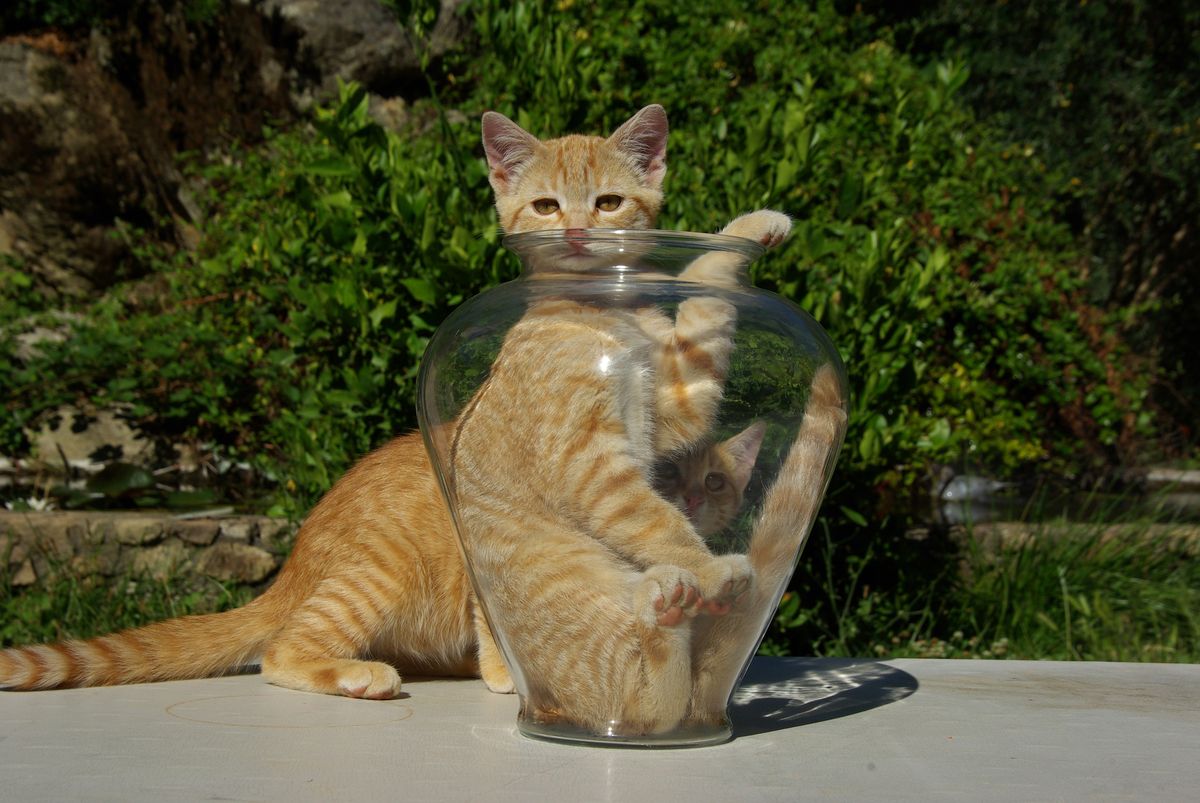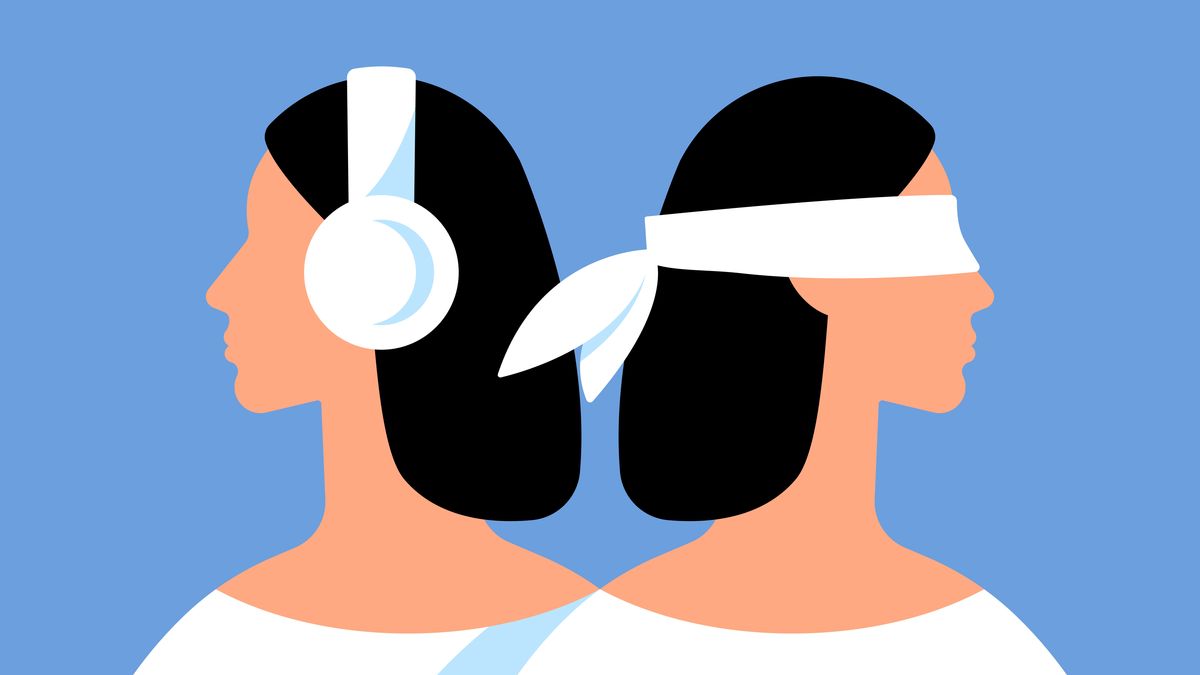
www.iflscience.com
Is "Orange Cat Behavior" Actually A Thing?
Delve into the comments of a video of a ginger cat acting a little (or very) silly‚ and you’re likely to find mentions of “orange cat behavior”‚ or one solitary orange cat brain cell being shared between them all.Although many of these comments are purely in jest‚ believe it or not‚ scientists have actually investigated whether or not coat color has any impact on cat behavior. So‚ what is orange cat behavior‚ and is it actually a real phenomenon?Are orange cats genetically distinct?The aptly named orange gene is on the X chromosome and not the Y chromosome‚ and is responsible for orange cats producing the pigment phaeomelanin that gives them their signature color. In orange cats‚ this pigment is expressed rather than the black or brown eumelanin‚ which is suppressed.Being on the X chromosome‚ the orange gene is sex-linked‚ meaning that a cat’s sex chromosomes can actually affect their color. Cats with one X chromosome can either be orange or non-orange‚ only needing one mutation to become a lovely pumpkin hue. Cats with two X chromosomes can have up to two copies of the gene‚ so need two mutations to be completely orange – they will be non-orange if they have no copies of the gene‚ or tortoiseshell with a patchwork of colors including orange if they have one.So how rare is a female orange cat? There are around three males for every one female ginger cat thanks to this genetic quirk.“Coat color can be linked to other aspects such as sex (more ginger male cats than female) or breed […] these areas are under represented in terms of study‚” Central Behavior Officer of UK charity Cats Protection‚ Daniel Warren-Cummings‚ told IFLScience. “There is a prevalent myth that male cats are more ‘friendly’ than female cats‚ which if true would likely be a reason why more people find ginger cats ‘more friendly’ but the reality is that that is still an unknown.”What does the research say?Cats are certainly expressive little creatures‚ with a recent study identifying 276 unique feline facial expressions and a 2021 study identifying seven distinct kitty personality traits. But is this in any way linked to the hue of their fur?“Some studies suggest that there may be a link between behavior and coat color‚ however‚ there’s no significant or conclusive evidence and the consideration of coat color is not something that shapes our decision-making process when considering differentials in why the cat may be behaving a certain way‚” Warren-Cummings told IFLScience.Some associations between coat color and behavior have been found in some mammal species‚ explain the authors of a 2015 study. “However‚ studies of domestic cats have shown mixed results regarding a potential relation between coat color and personality.”The researchers focused on human perceptions of cat personality‚ surveying 189 cat owners on the personalities of their feline companions. They found that orange cats were rated “relatively high in friendliness and low in aloofness and shyness” compared to other colors of kitty. White cats were seen as more aloof‚ shy‚ calm‚ and low in activity‚ friendliness and boldness; black cats didn’t have any traits that were rated particularly differently from other colors; bi-colored cats were perceived as friendly and low in aloofness; and tri-colored cats seen as aloof‚ intolerant‚ and low in friendliness.However‚ this all comes down to people’s subjective observations of cats. “Many studies into behavior and appearance are surveys or questionnaires given to the owner/care-giver and we must understand that individuals' understand[ing] of labels such as ‘friendly’ will vary drastically‚” Warren-Cummings explained. “Additionally‚ many personality/appearance-based studies look at other types of personality such as ‘stubborn’‚ which most credible behaviorists would not be looking at‚ or describing as‚ due to the fact it is an incredibly subjective term that comes from a very anthropocentric and anthropomorphic view of interactions between humans and cats.”“To date there is little evidence that these perceived differences between differently colored cats actually exist‚” lead study author Mikel Delgado explained in a statement at the time. “We hope that this study will be a starting point for further research in what qualities affect adoption and retention of pet cats‚ and whether there is a genetic or physical basis (such as coat color) for personality differences in cats.”Why is orange cat personality perceived as being different? The study authors suggest that it may be down to how they’re portrayed in the media‚ with certain orange cat cartoon characters shaping people’s perceptions.“Interestingly‚ depictions of some of the most well-known orange cats in American culture‚ such as Morris‚ ‘The world’s most finicky cat’ […] and Garfield‚ who is described as lazy and cynical […]‚ are not positive. However‚ based on sales and advertising‚ these two cat character are hugely popular within the United States‚” they write.“One possibility is that the tendency for orange cats to be highly anthropomorphized in advertising and other popular media influences their popularity. For example‚ both Morris and Garfield are depicted as being able to talk.”So could the breed of a cat influence their behavior? “Breed doesn’t play as significant a role in behavior as some people may think but it plays more of a role in cat’s behavior (if at all) than coat color‚” said Warren-Cummings. “For example‚ some breeds of cat are thought more prone to suffer from pica‚ the consumption of non-edible materials‚ (eg. Siamese or Tonkinese) while some breeds are considered to be more vocal (again‚ Siamese or Tonkinese).”“It’s important to remember then anecdotally‚ it’s fair to conclude that most cat breeds have been selectively bred for aesthetic reasons more than behavioral. It’s not like selecting dog breeds to provide a certain service or be good at a particular skill. Nature had created what is now known as ‘the moggie’ and then human tampering has led to the development of other breeds primarily for looks‚” said Warren-Cummings.A 2016 study on purebred cats investigated whether their personality traits were associated with their breed‚ pattern‚ eye color‚ or coat color. Owners of registered‚ single-breed cats were asked to complete a questionnaire on their cats’ behavior‚ with 394 surveys included in the final analysis.The breeds included in the analysis were Abyssinians‚ Bengals‚ Birmans‚ Burmese‚ Devon Rexes‚ Maine Coons‚ Norwegian Forest cats‚ Orientals‚ Persians‚ Ragdolls‚ Siamese‚ and Tonkinese. Coat colors included agouti‚ black‚ brown‚ cinnamon‚ blue‚ lilac‚ fawn‚ caramel‚ taupe‚ red‚ cream‚ blue cream‚ apricot‚ and white.“What we do know about breeds is that health conditions can be more inheritable than behavior traits and the development of certain breeds has contributed to cats having diminished welfare and well-being‚” explained Warren-Cummings. “We know breeds with extreme conformities‚ such as brachycephalic" – with a shorter skull‚ much like in pugs – “can suffer breathing and eating difficulties.”The study authors hypothesized that pleiotropy‚ when a gene influences two or more traits‚ could unintentionally happen in selecting for a particular color. However‚ although some associations were found between personality traits and coat color‚ when the breed of cat was controlled for‚ the picture changed.“Our hypothesis that associations between appearance and behavior would occur independent of breed was largely unsubstantiated‚” they wrote. “Interestingly‚ nearly all associations between behavior and coat type could be attributed to breed-based behavior differences.”What actually affects a cat’s behavior then? Is it nature or nurture?“In my professional opinion (shared by many others) both ‘nature’ and ‘nurture’ are the most important factors in how a cat will behave throughout their life‚” said Warren-Cummings.Although breed and coat color don’t seem to have a huge influence on how a cat will behave‚ some traits do seem to have some roots in genetics. “’Nature’ or genetics is also significantly important‚ for example ‘boldness’ (AKA confidence) is thought to be an inheritable genetic trait. Again‚ using label words is not particularly helpful but a cat that is more confident when tested approaching new or novel stimulus could be considered ‘bold’ or confident‚” said Warren-Cummings.However‚ how a cat is socialized is key to how they will behave.“The ‘nurture’ part of the question relates to good socialization during the sensitive socialization period or 2-7 weeks. There are a number of papers that look at adequate socialization during this time and how it can affect a cat’s behavior throughout the rest of their life including their confidence‚ their willingness to approach people and engage with new or novel stimulus‚” explained Warren-Cummings. “A good socialization plan is one of the greatest tools in affecting the behavior of a cat.”So there we have it – your orange cat may indeed be a very silly little guy‚ but their charmingly odd behavior is probably not linked to their coat color.













